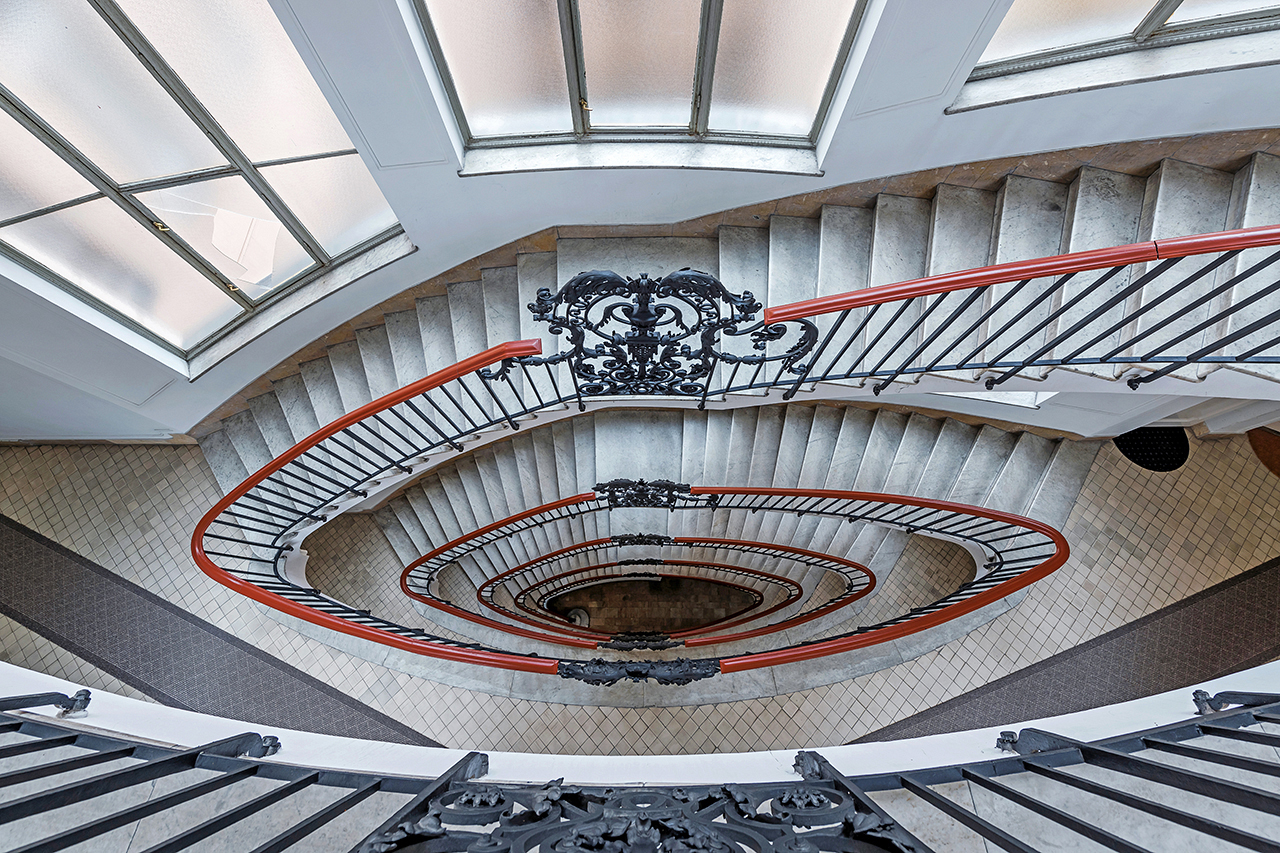András Jelky School of Applied Arts, VIII. Rákóczi tér 4
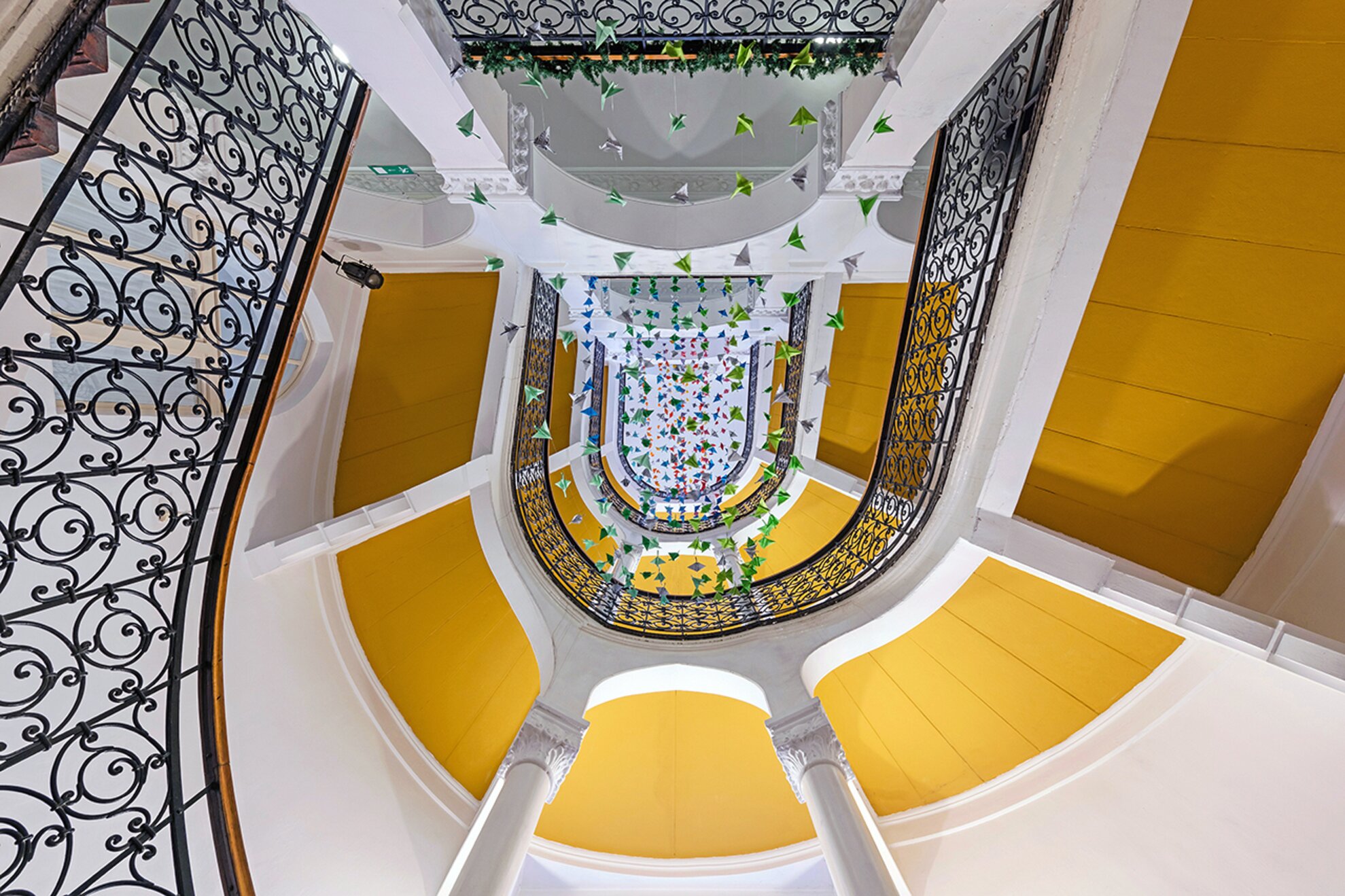
This school building, designed by Gyula Pártos, who worked with Art Nouveau pioneer Ödön Lechner, opened its doors in 1910. The bright, ornate staircase, its windows decorated with special pyrogranite ceramics developed by the famed Zsolnay factory, viewed by the public within the framework of the annual Budapest100 open-doors architectural visits.
Várkert Bazár, I. Ybl Miklós tér 2-6
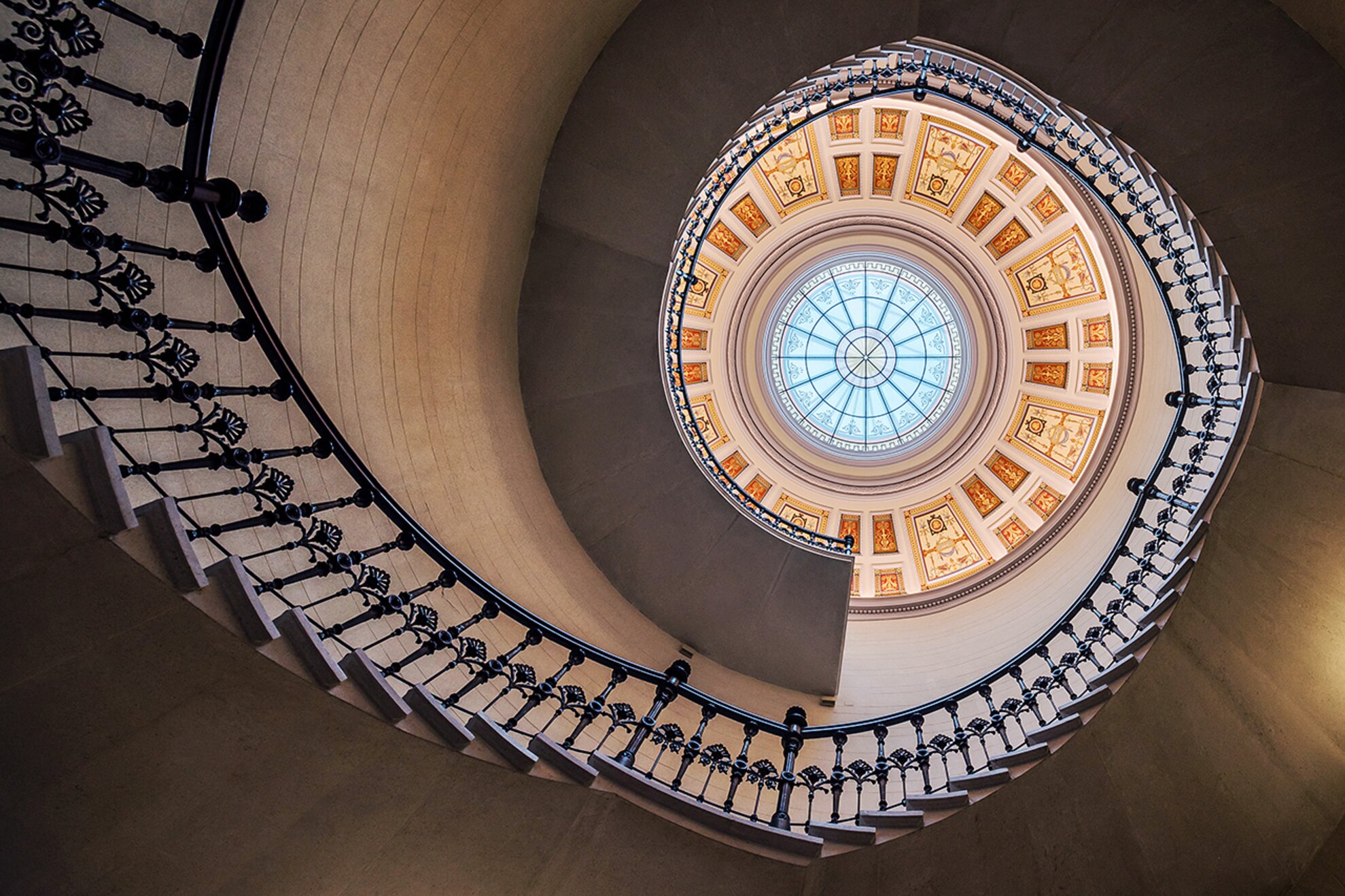
This row of buildings on the side of the Neo-Renaissance garden and Castle Hill was built between 1875 and 1883 according to the plans of one of the greatest Hungarian architects, Miklós Ybl.
IX. Vámház körút 15
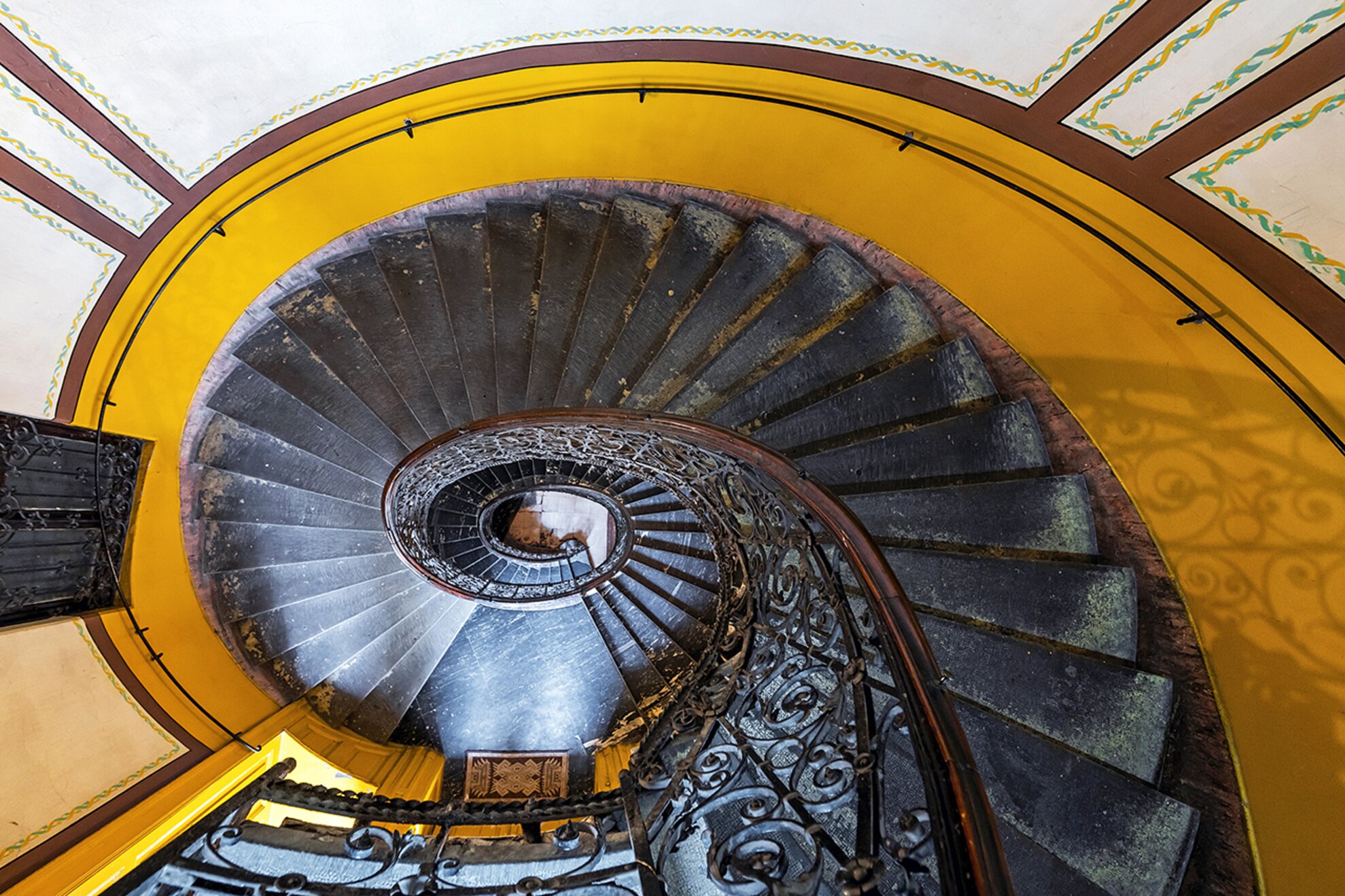
Miklós Ybl also designed the two-storey residential house at the junction of Lónyai utca and Vámház körút in 1863-64 for Károly Dlauchy, a master of locks, with whom he also worked in connection with the construction of Fót Church. The real special feature of the building is its staircase, whose ceiling is decorated with frescoes by famed painter Károly Lotz, and whose arched wrought-iron railing winds between the floors.
VIII. Bródy Sándor utca 4
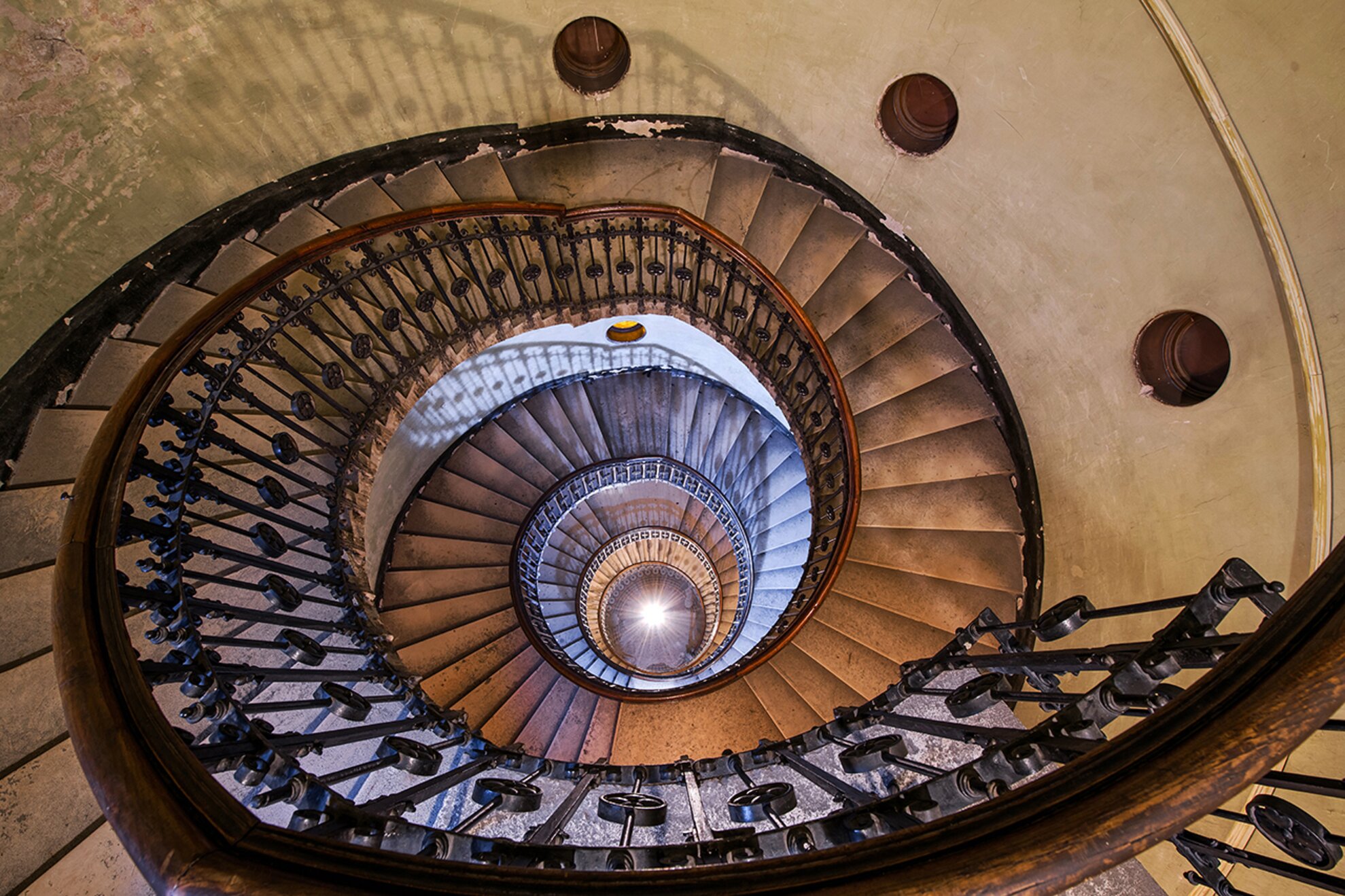
Many people have passed in front of the building with its ornate façade designed by Antal Wéber - in the street next to the National Museum, you might recognise the colorful frescoes by Károly Lotz, which also decorate the building from the outside. The property was commissioned by Károly Ádám, a textile merchant, and his wife, Aigner Matild – the house was built between 1875 and 1876, modelled on a Venetian palace.
Ritz-Carlton Hotel, V. Erzsébet tér 9-10
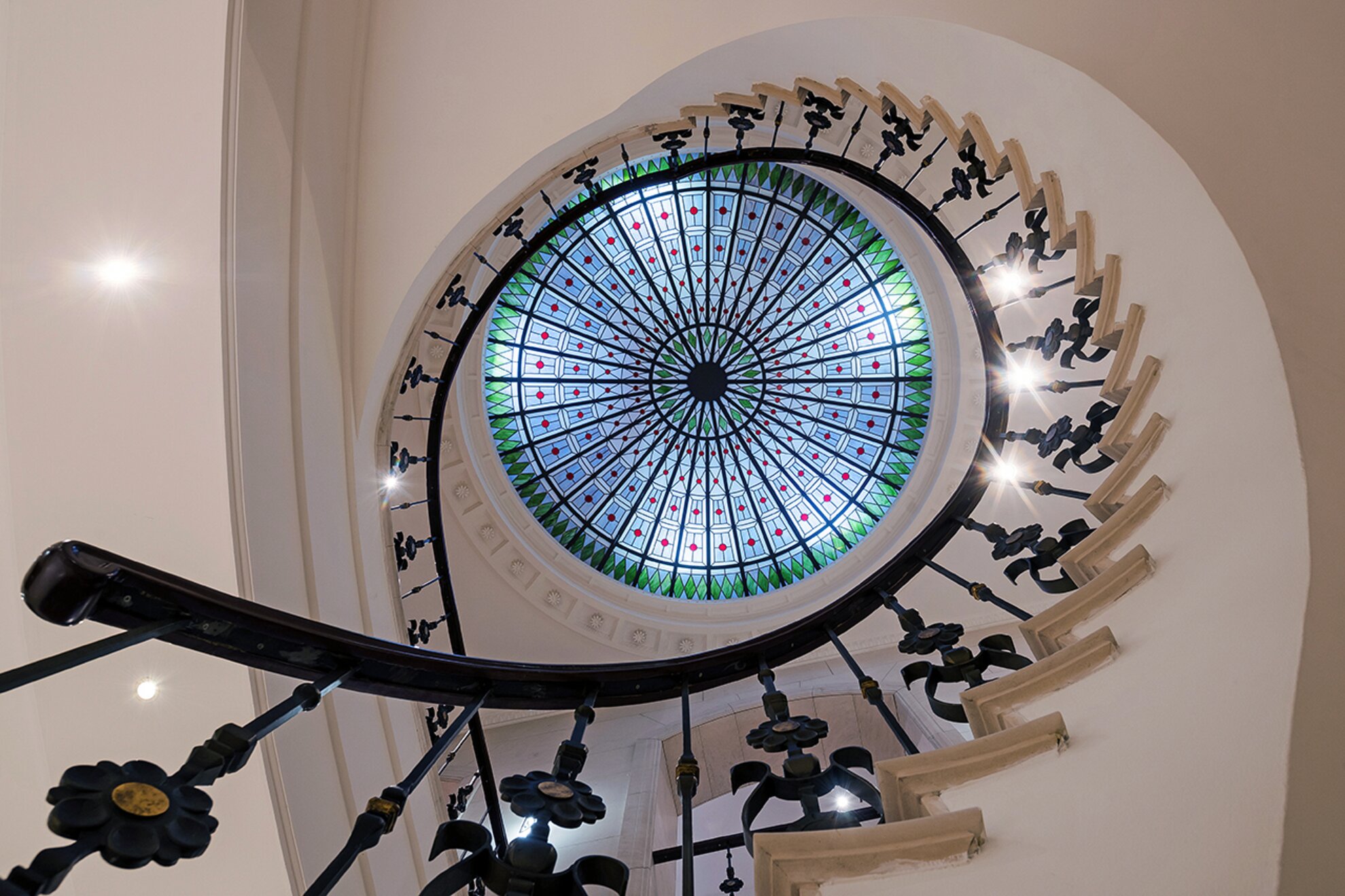
Today’s elegant luxury hotel was originally built for the headquarters of Trieste-based Adriatic Insurance, with offices, shops on the ground floor and apartments on the upper levels. Although it was completed before World War I according to the plans of Emil Tőry and Móric Pogány, it wasn’t handed over until 1918.
Gerlóczy Café, V. Gerlóczy utca 1
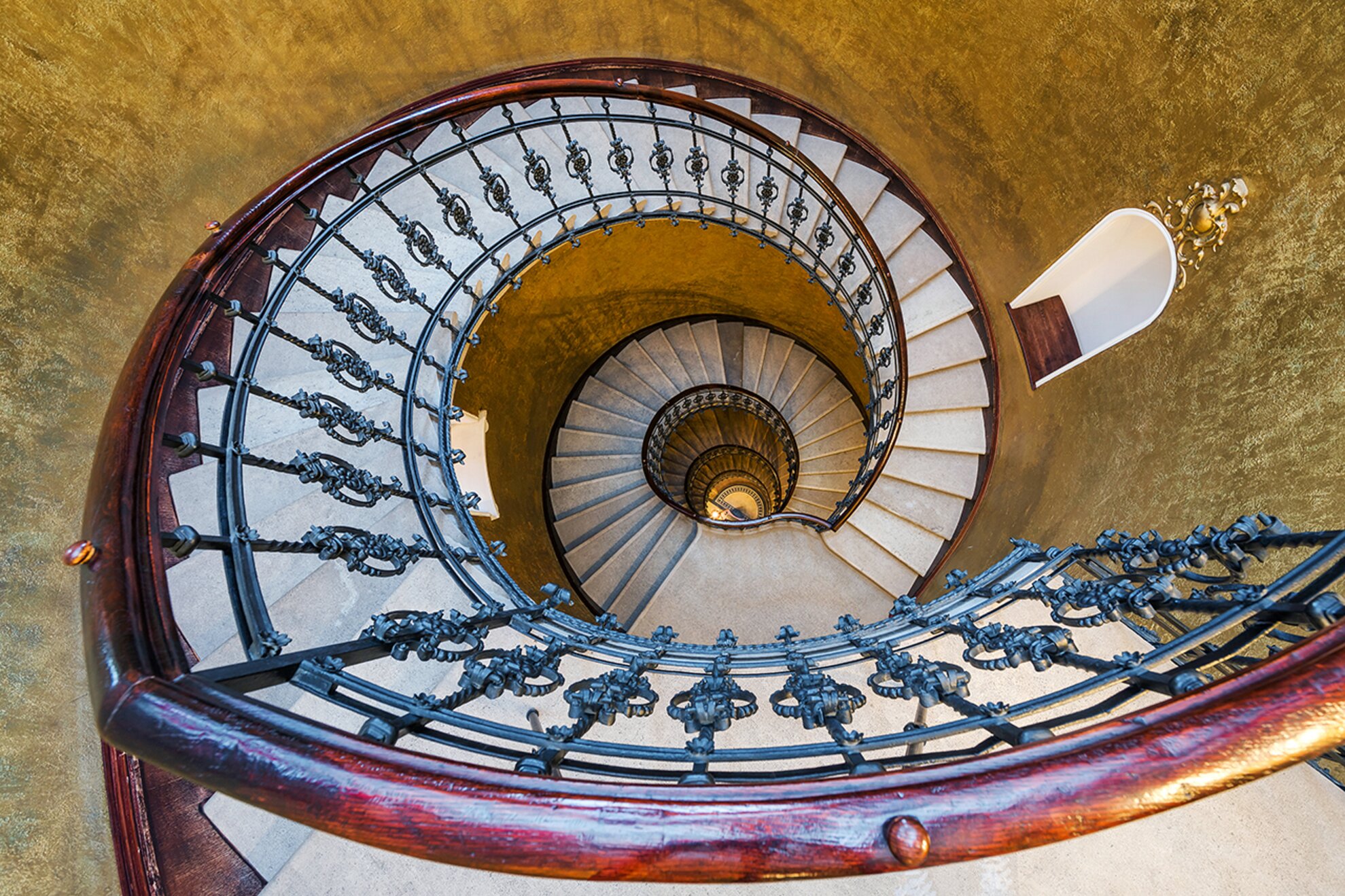
The Gerlóczy Café is a homely, Parisian-style café, restaurant and boutique hotel in a downtown setting, a 19th-century building a few metres from the Town Hall on Gerlóczy utca.
VI. Dalszínház utca 8
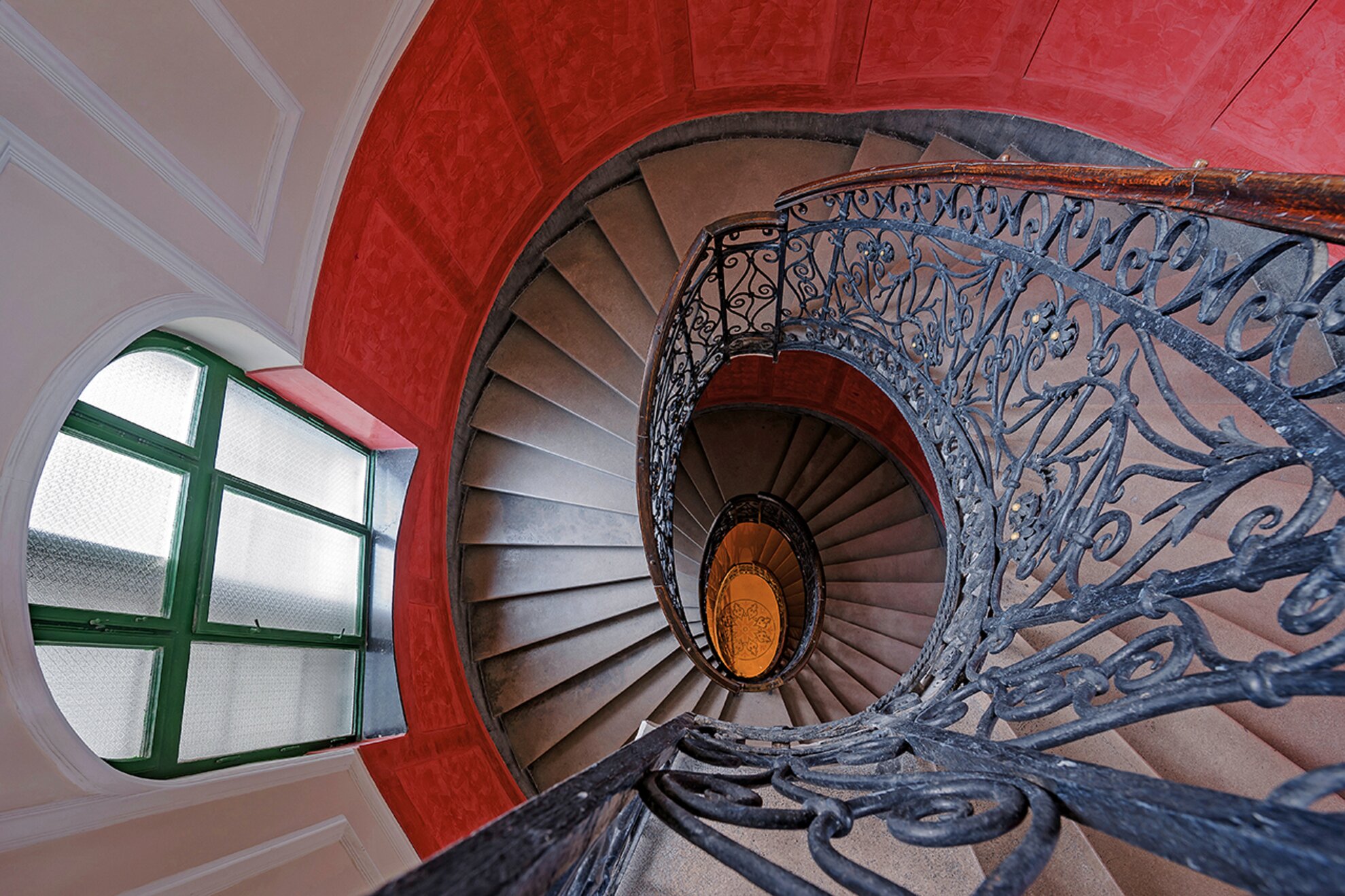
Adjacent to the Opera House, this building was designed in the early 20th century by Izidor Sterk, and its real treasure is the well-preserved, elegant, wrought-iron railing lining an egg-shaped staircase.
Aria Hotel, V. Hercegprímás utca 5
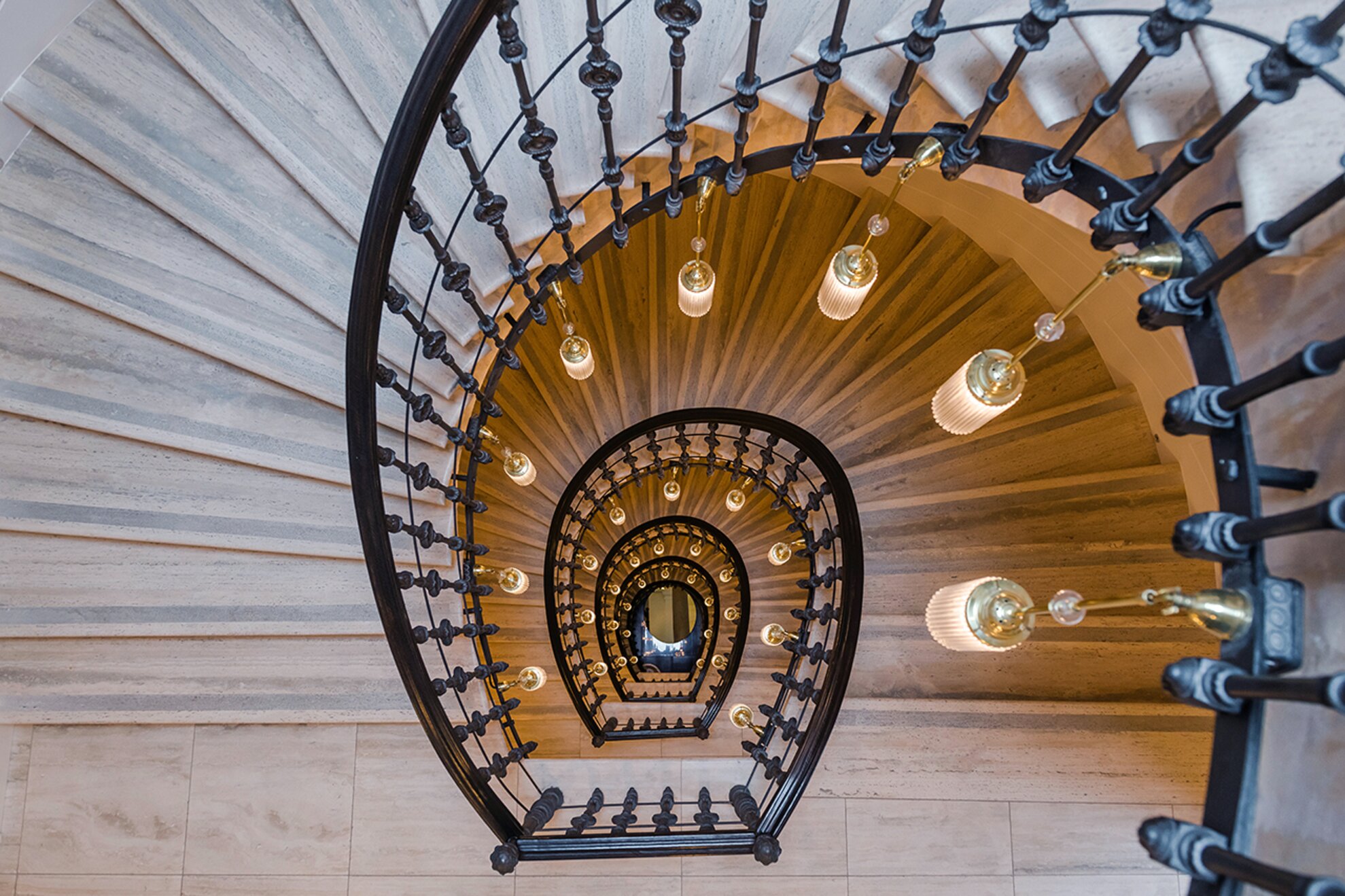
The design of this boutique hotel on Hercegprímás utca has been set according to music, with four wings representing different styles: classical, opera, jazz and contemporary.
St Stephen’s Basilica, V. Szent István tér
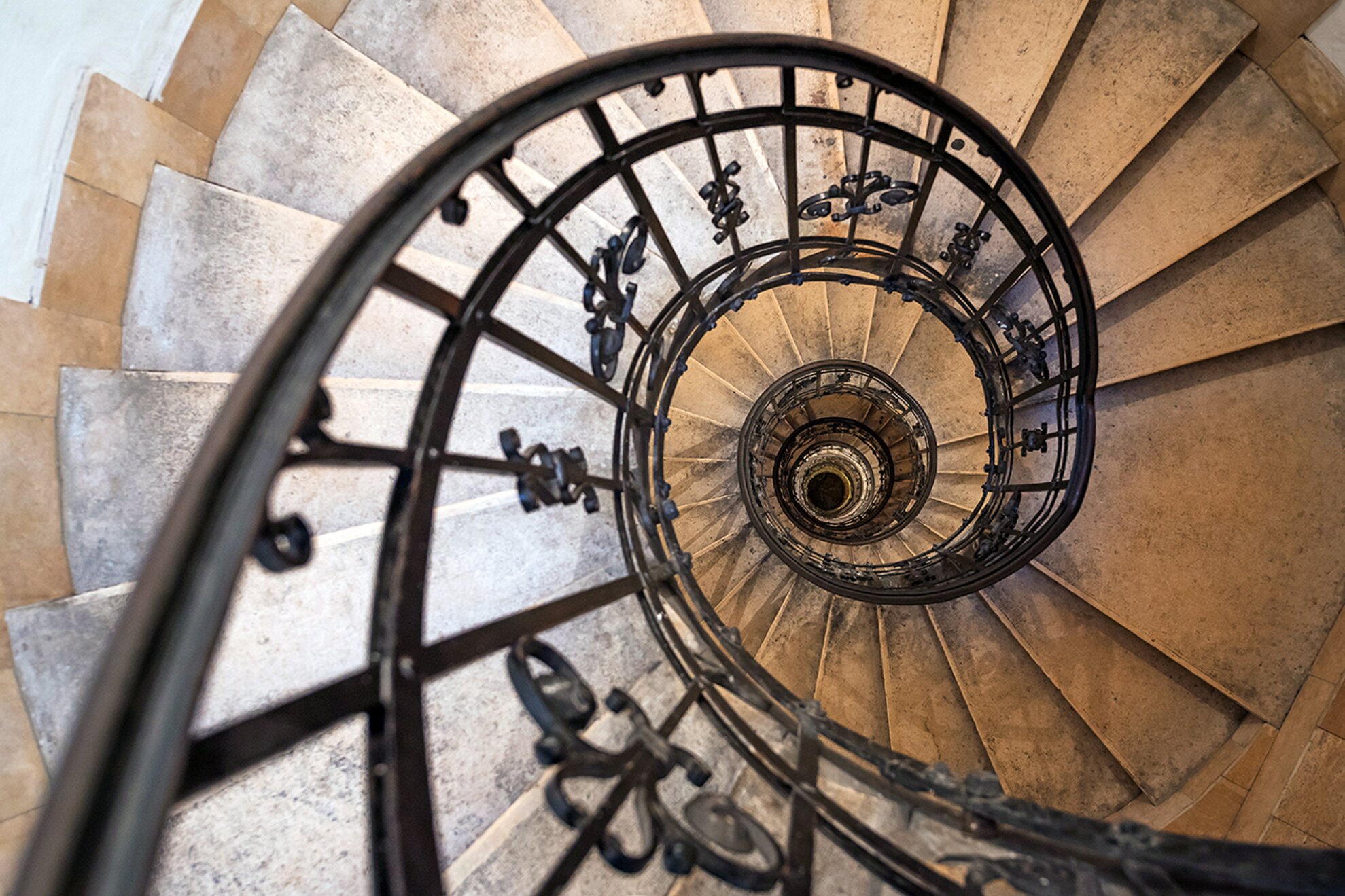
Who would have thought that grandiose St Stephen’s Basilica also hides such a delicate little spiral staircase? Budapest’s largest Neo-Classical church underwent a legendarily long construction process, 54 years, although its design was first drawn up before the War of Independence in 1848 and was not completed until 1905.
V. Kossuth Lajos tér 13
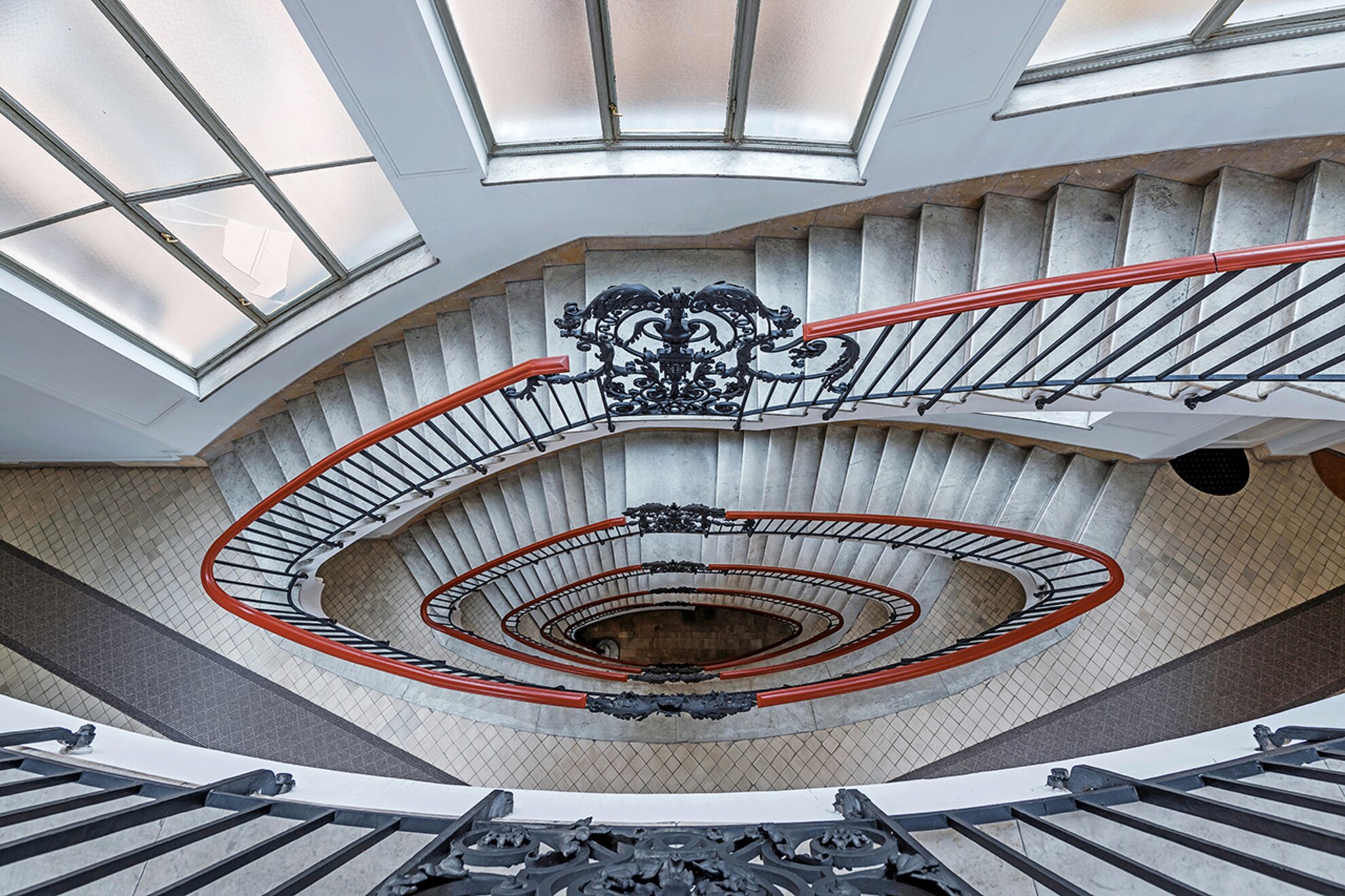
This apartment building was designed by Béla Málnai for the Hungarian General Coal Mines, and completed in 1919. According to Hungarian Architecture: “We don’t have many buildings with this kind of monumentality, whose architecture would have been built with so few elements and so much self-restraint. In addition, the large lobby of the building, with its ornate and beautifully designed wrought-iron gates, has an immediate effect: the fireplace, the bench, columns and floor are all made of polished coloured marble in the foyer, and with their beautifully tinted rich interior, they provide a uniform warm overall impression. By contrast, the two staircases of the house, apart from their few architectural details, show an extremely clever and completely modern solution”.
IX. Üllői út 113
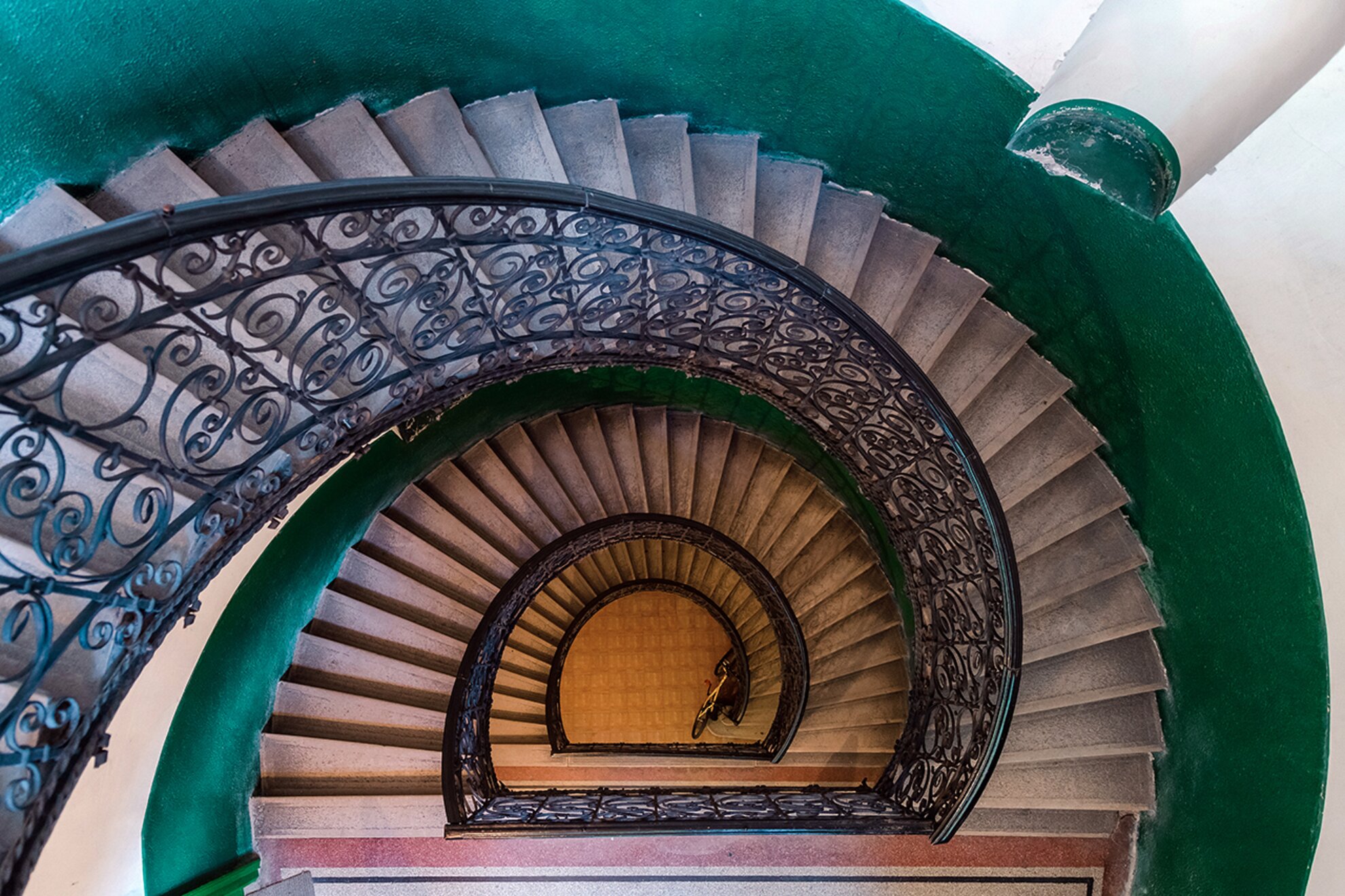
Opposite Orczy kert, this building, decorated with terrifying faun heads, was badly damaged during the 1956 Uprising, but its staircase escaped destruction.
VIII. Krúdy Gyula utca 11
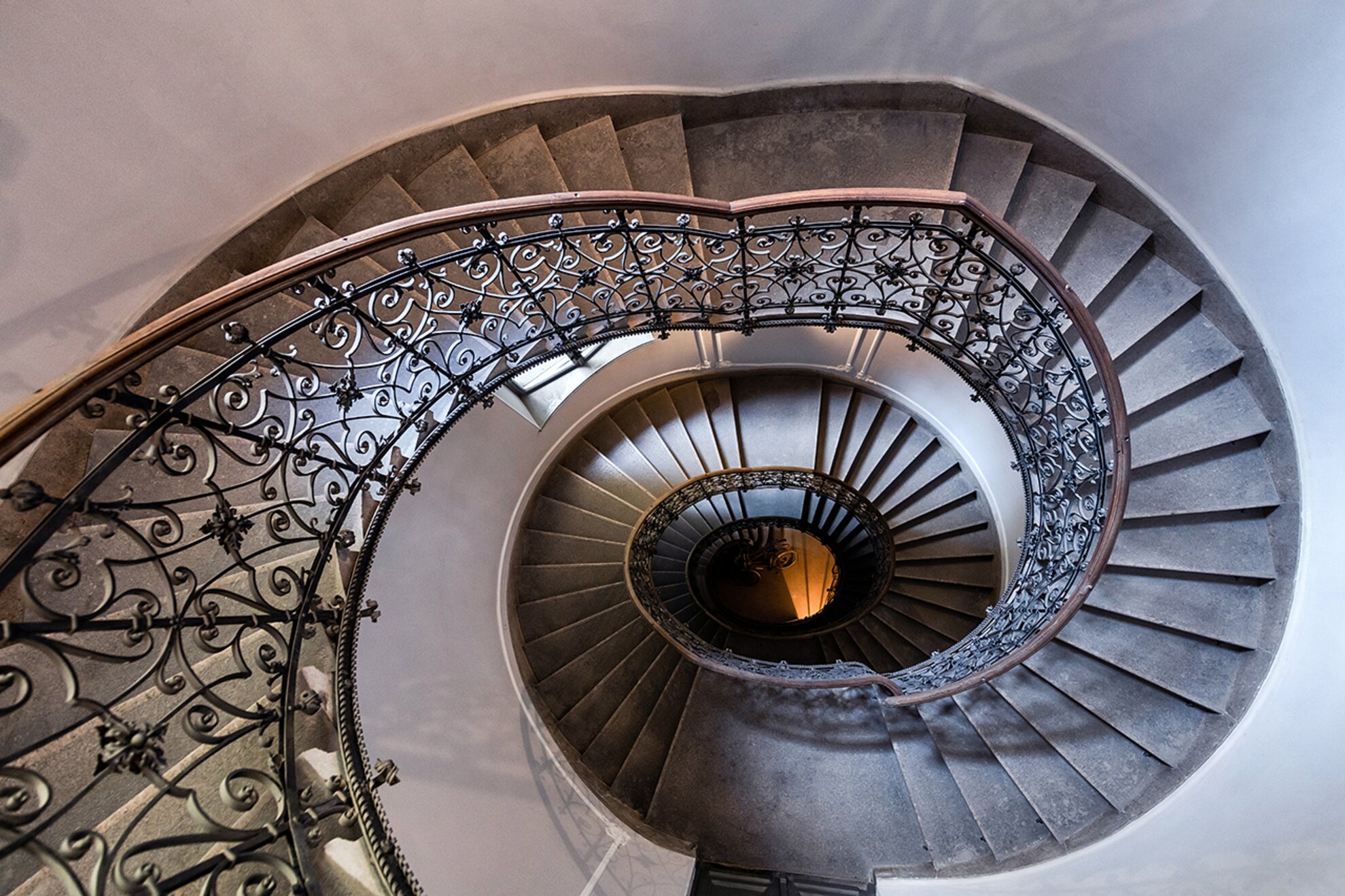
The recently renovated building hides a strange, elliptical staircase, where even some elements from the former cladding can be found: the ground floor is decorated with mosaics, the top floor with a patterned terrazzo. The building was originally built as an apartment building, then from 1916 it was transferred to the Royal Hungarian University Foundation. A year later, the Collegium Marianum operated here, then in the 1950s it became the boys’ college of Pázmány Péter University. Finally, apartments were built into it.
Ybl Palace, V. Károlyi utca 12
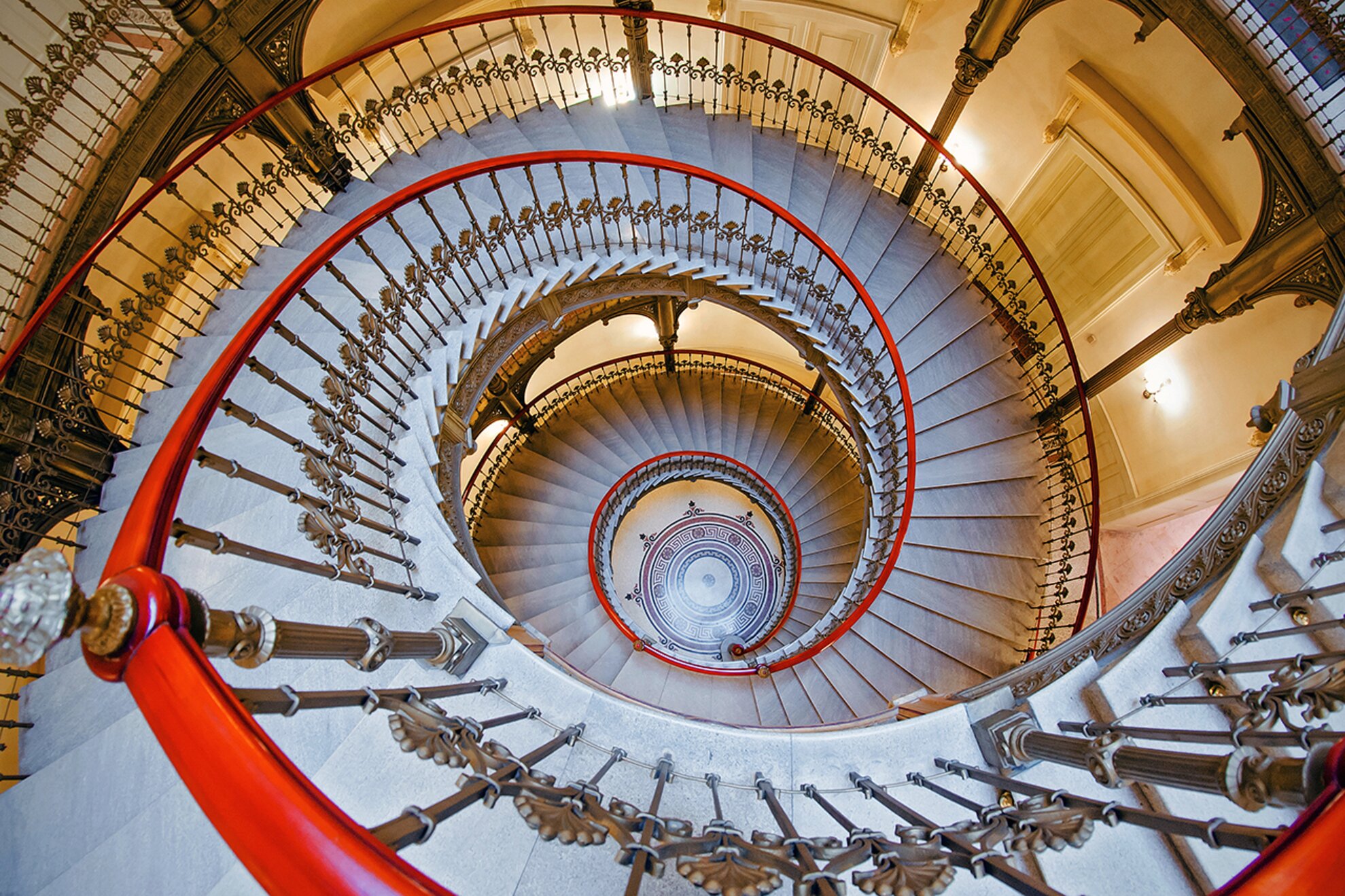
The headquarters of the Pest Hungarian First Savings Bank, designed by Miklós Ybl, is one of the most beautiful and beautifully renovated buildings in the city centre. In line with the custom of the age, in addition to the offices, revenue-generating functions were also included, so the door of a café once opened under the corner tower of the building, and elegant civic apartments were created upstairs. The staircase is one of the most beautiful in Budapest, used in a recent video by popular Hungarian band Ivan & Parazol.
Dunapark Houses, XIII. Pozsonyi út 38-40
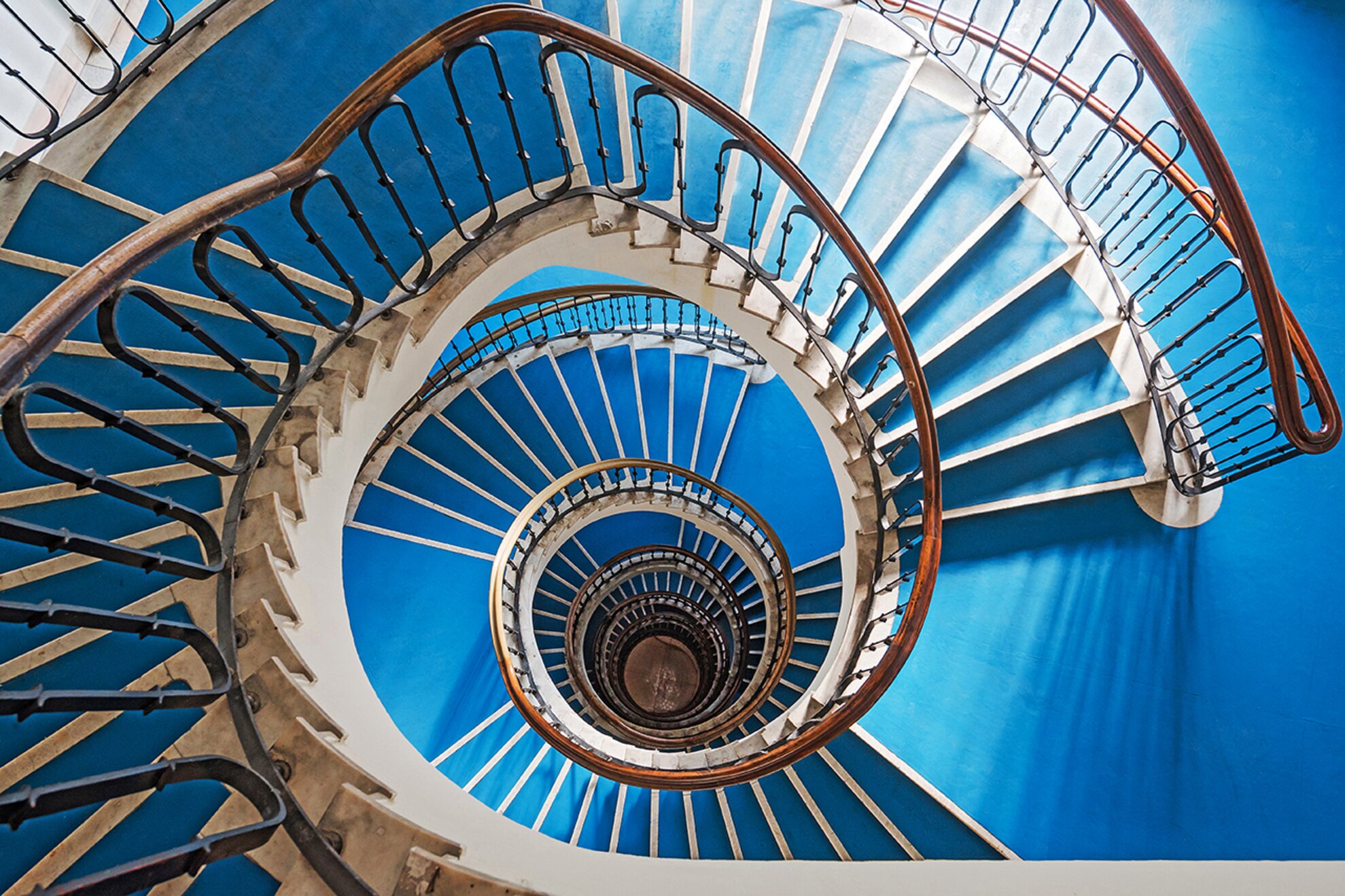
It is perhaps the most photogenic staircase in the city, appearing in many films, videos and advertisements – but the buildings known as the Dunapark Houses not only contain this impressive feature but also break new ground in that their designers, Béla Hofstätter and Ferenc Domány, were revolutionary innovators of modern architecture and apartment buildings. In houses built of quality and luxury materials, you find ample original detail, ranging from the blue covering of the corridors to the wardrobes of the apartments.
II. Margit körút 15-17
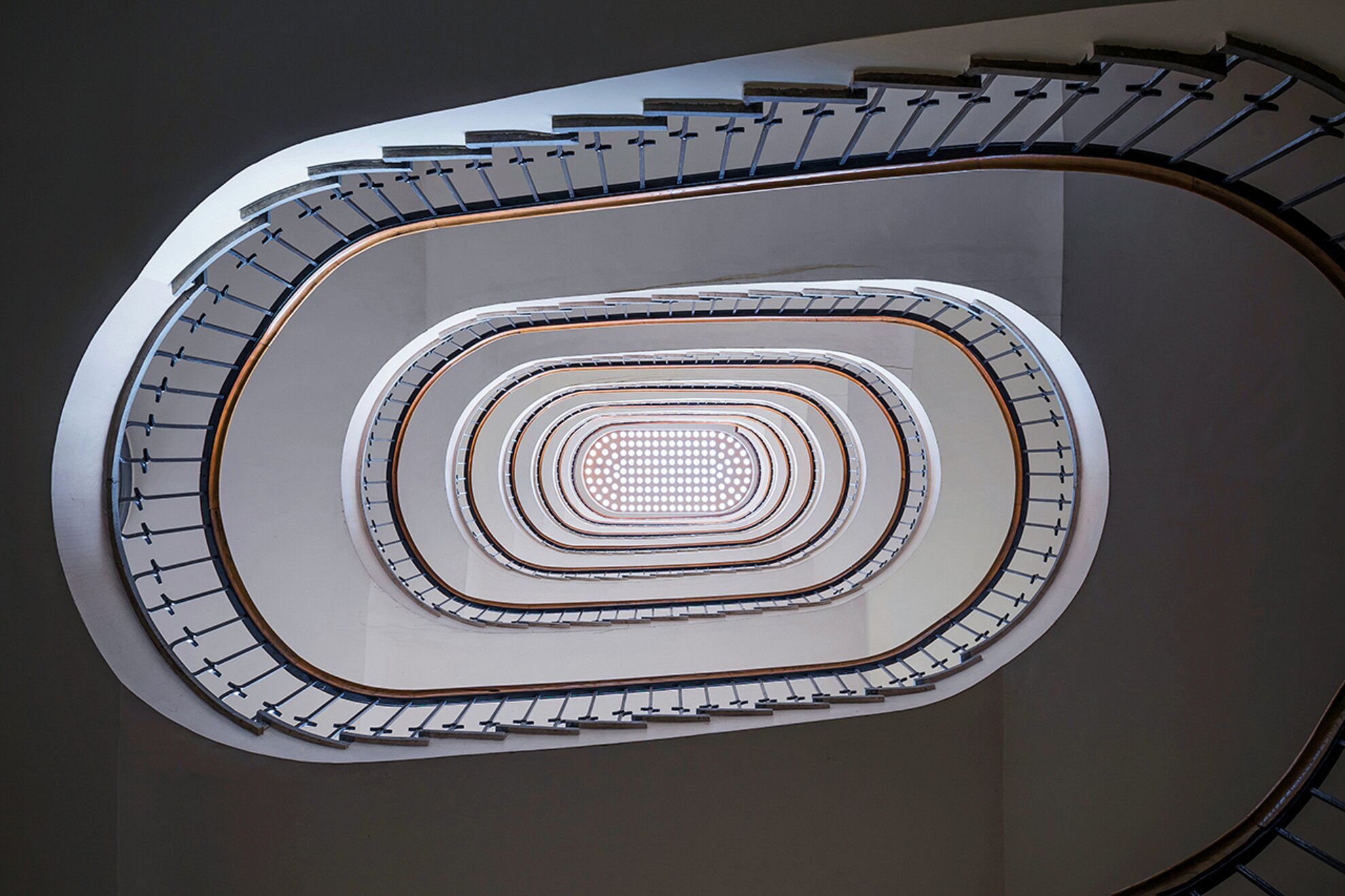
This apartment house on Margit körút, built in 1937, hides perhaps the most outstanding staircase in the city, mocked in its day as the ‘Piston House’. Industrialist Manfréd Weiss of Csepel Works fame had it built, according to the plans of notable designers Béla Hofstätter and Ferenc Domány, also responsible for the Dunapark Houses (see above).
V. Szalay utca 5A
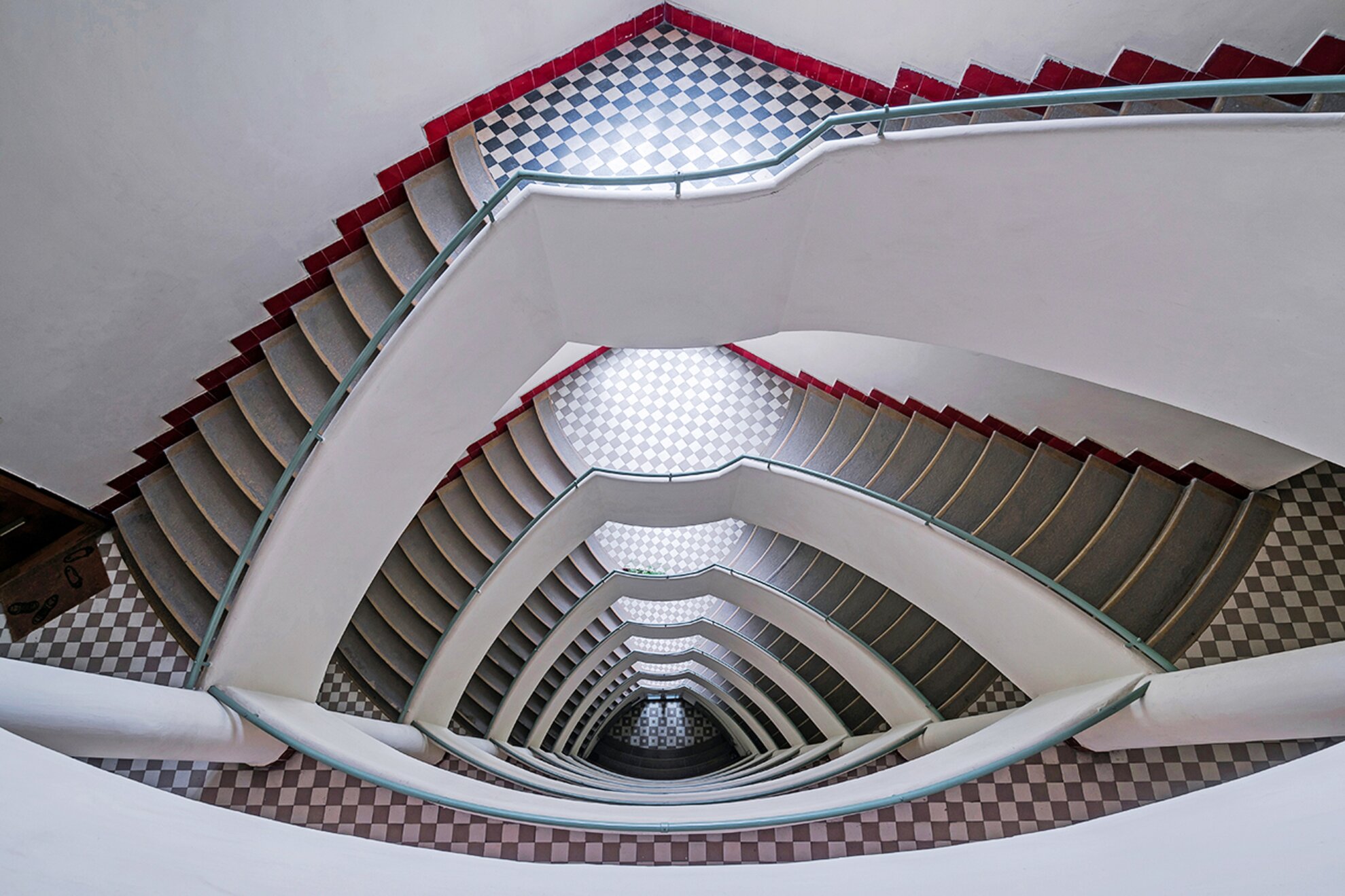
Another beautiful reminder of Hungarian Modernism is this apartment block built for the Association of Royal Hungarian Postmasters, with its special triangular staircase. The plans were created by architect György Rumszauer in the second half of the 1930s.
XIII. Tátra utca 23A
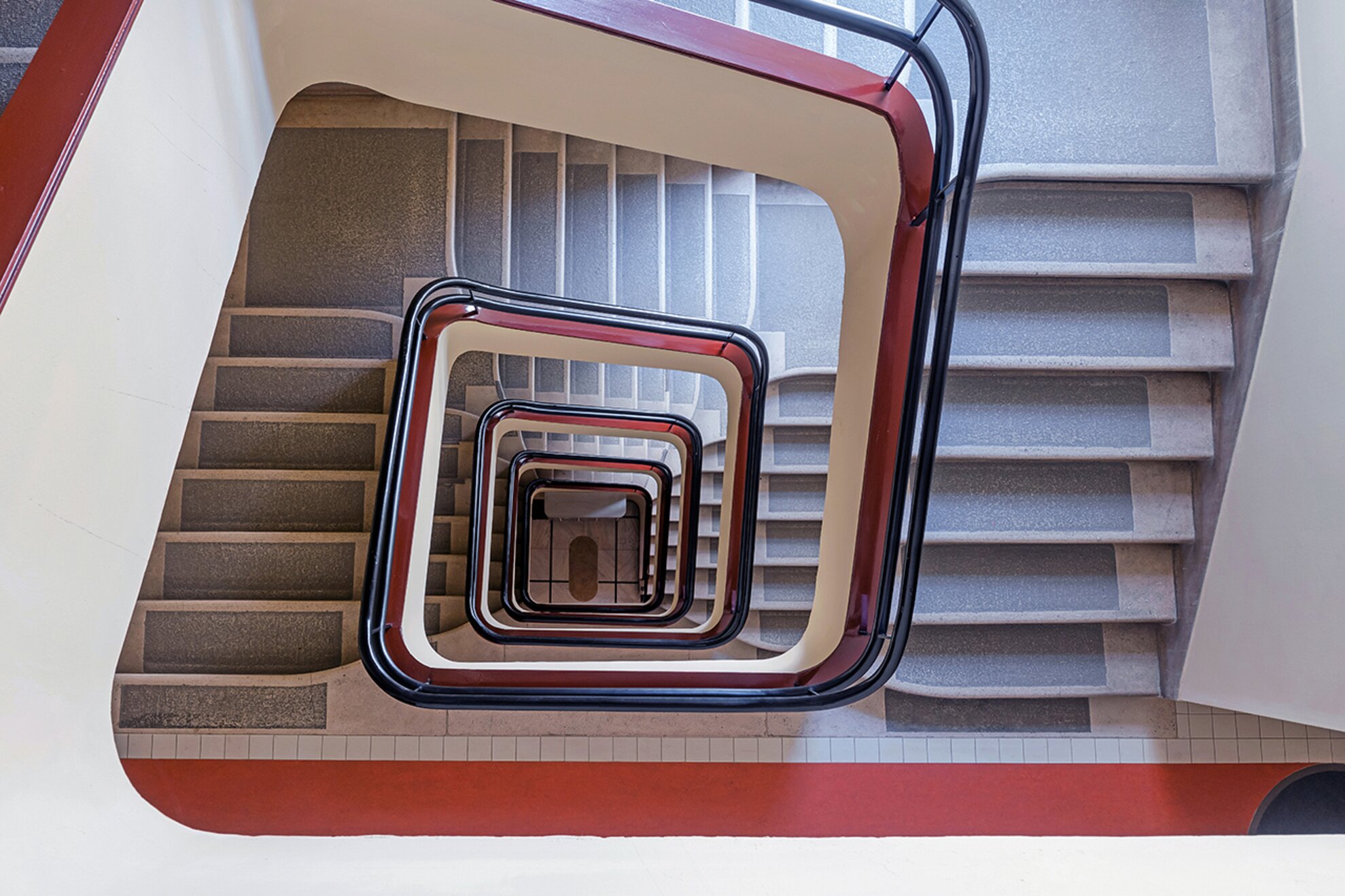
Another Modernist masterpiece created in pre-wars Újlipótváros, this house was built according to the plans of Endre and György Farkas. According to András Ferkai in The Architecture of Pest Between the Two World Wars: “The lobby, the staircase courtyard and every detail portray more careful design work than usual. The walls of the foyer are covered with travertine tiles up to the ceiling. The lobby staircase, the radiator bench cover and the window frames are all made of the same material”.
Hotel RUM, V. Királyi Pál utca 4
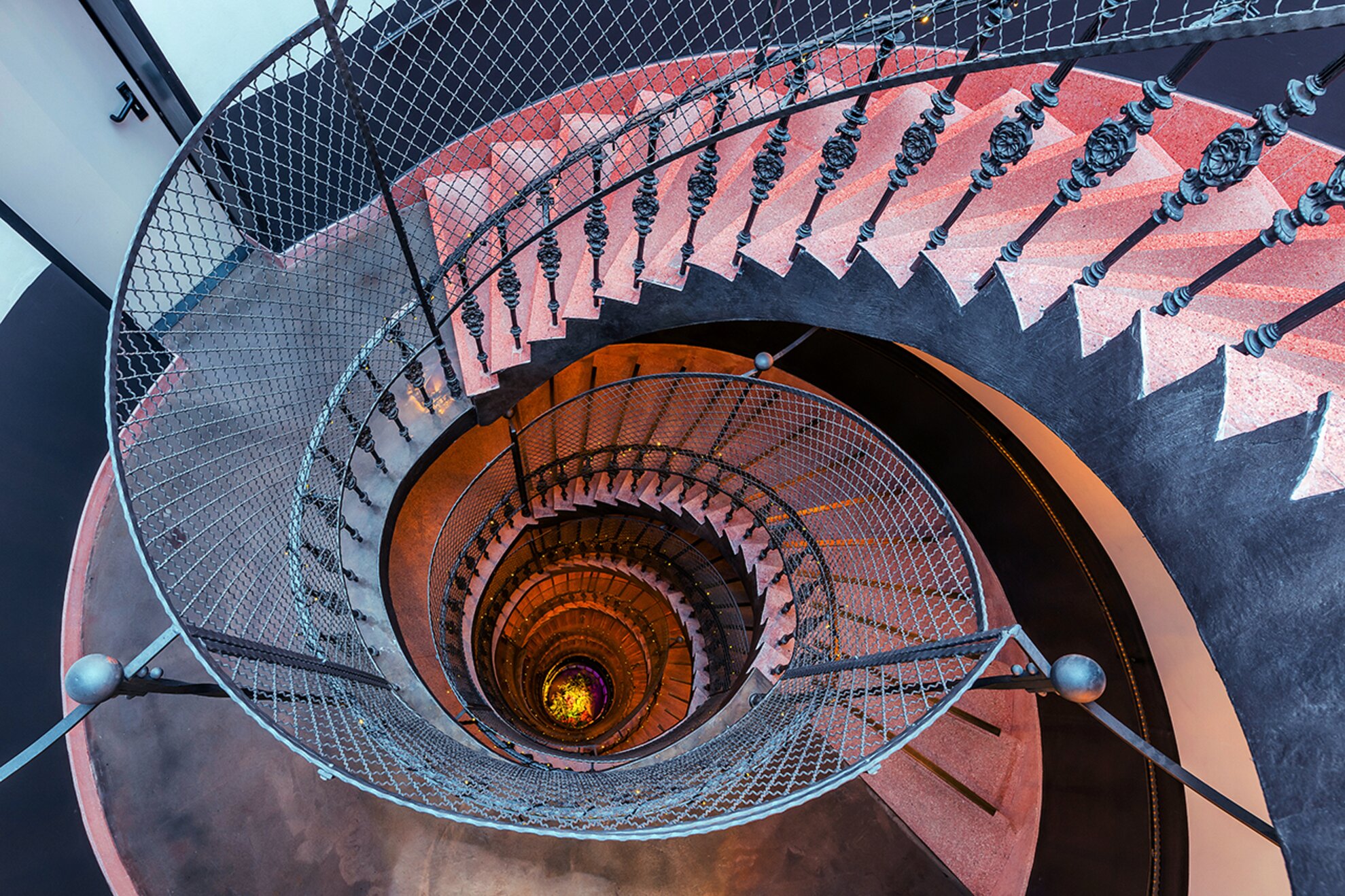
Renovated a few years ago, this former residential building in the city centre now houses a restaurant and a hotel, its interior design combining classic surviving old elements with a modern design.
CEU, V. Nádor utca 13
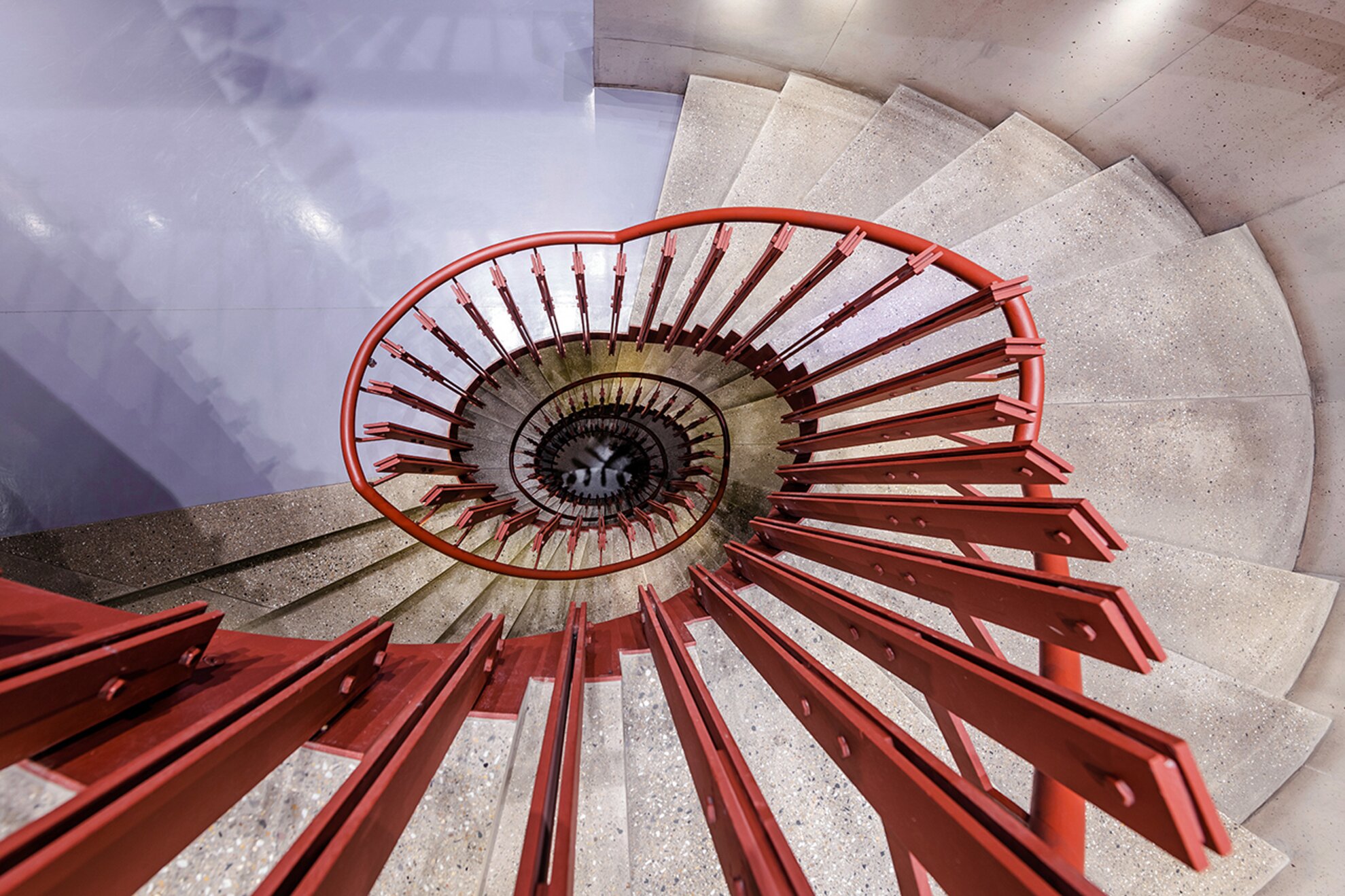
The new wing of this building, a special prize-winner at the Budapest Architecture Awards, was designed by Dublin-based O’Donnell + Toumey, the complex completed in 2016.
Béke Hotel, VI. 43 Teréz körút
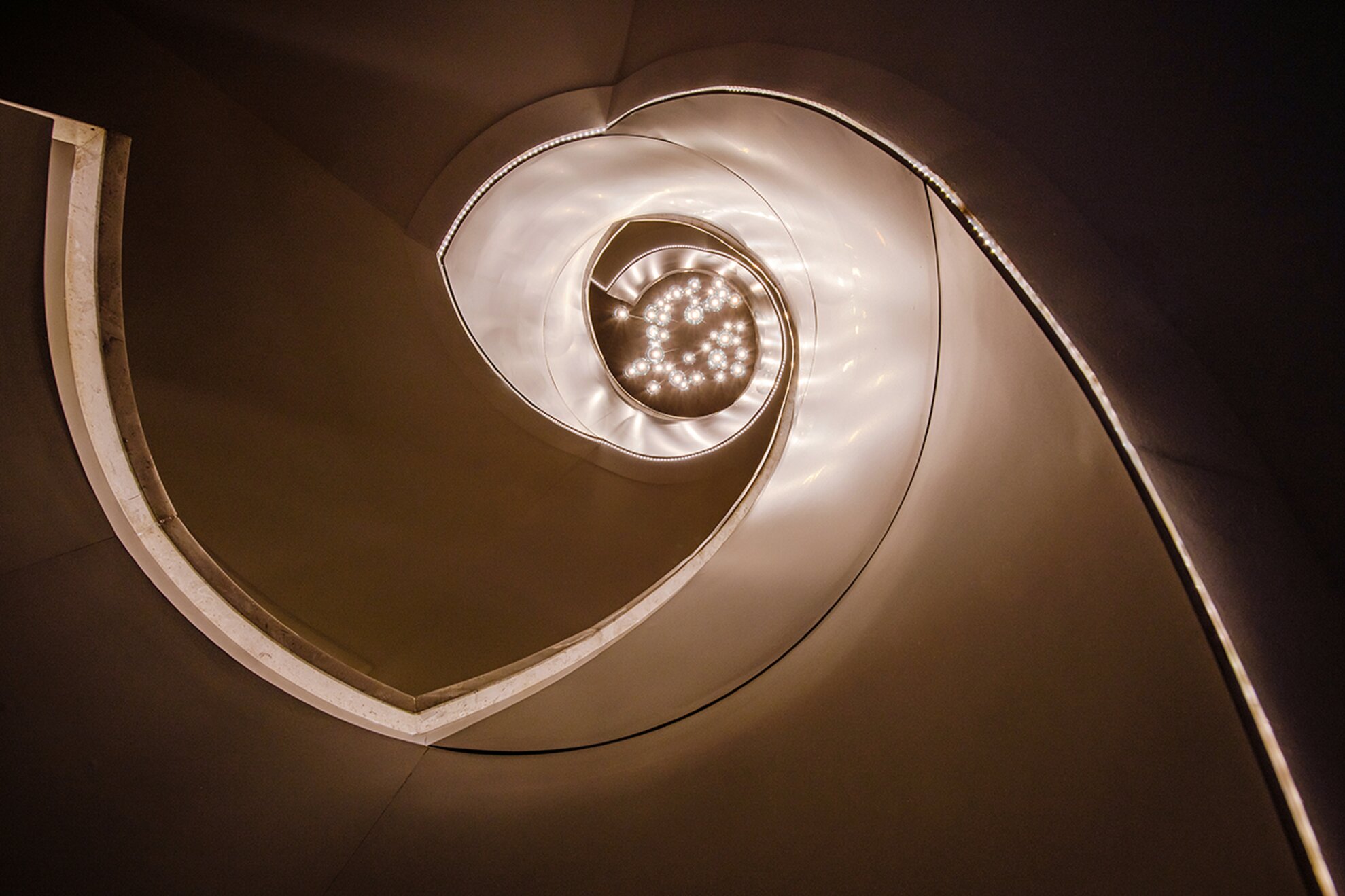
This landmark hotel on the Grand Boulevard, in operation since the early 1900s, is decorated with works inside and out by Jenő Haranghy: paintings, stucco and glass windows. In its café, everything is served with crockery from the Zsolnay porcelain factory.
